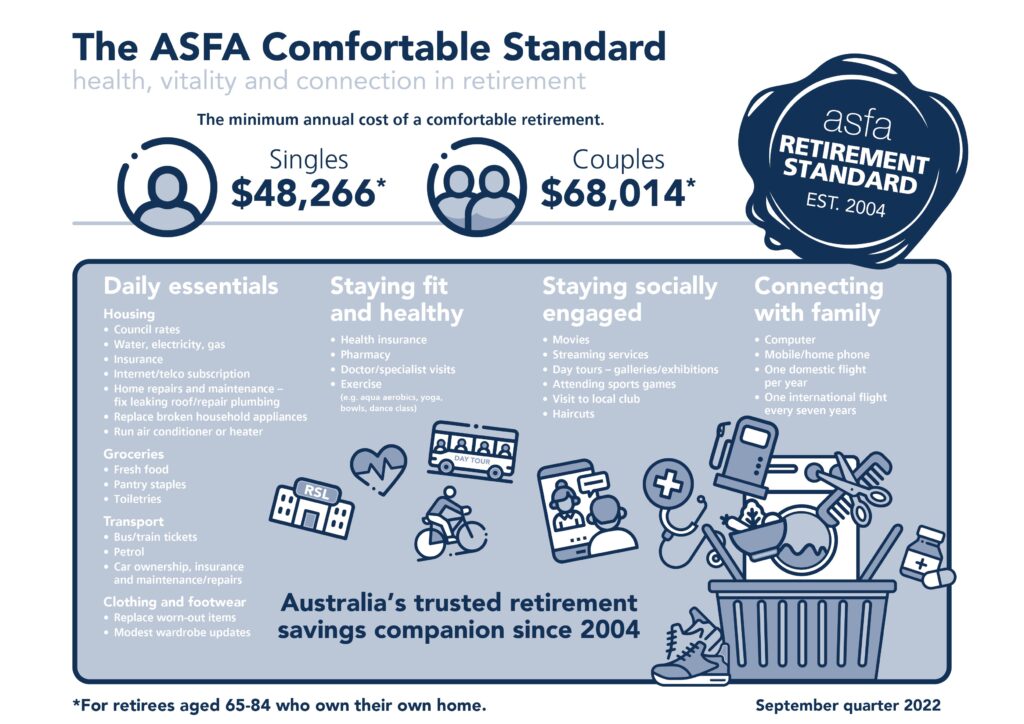





Outside of the family home, superannuation is likely the largest asset you will have in retirement.
These funds will be heavily (or for many, solely) relied upon to support you financially when your working days are in the past. It’s in your best interest to pay attention to how your super is managed, where the opportunities are, and how to ensure your nest egg reflects a lifetime of hard work. Enter: Hewison Wealth Adviser, Stephanie Patrick.
Superannuation is concessionally taxed, meaning you frequently pay less tax than for assets held in your own name. Super is also often professionally managed, so as an investment structure there are plenty of benefits to using it as your key retirement savings tool.
With life expectancies continuing to increase, retirement eras are starting to match those of our working careers, so ensuring your super is invested strategically is a crucial step to helping you fund your future and reduce the risk that you will outlast your money.
While compulsory super in Australia has only been around for 30 years, APRA’s most recent data shows we now have the fifth-largest retirement savings system in the world — worth over $3.3 trillion! Assets held in the Australian superannuation system now exceed the entire market capitalisation of all companies listed on the Australian Stock Exchange. No wonder we’re flooded by advertisements, convincing us to bring our hard-earned cash to their honey pot.
Unless you are a defined benefit fund member, or if your workplace agreement specifies you must use a particular super fund, you have the right to decide where your superannuation contributions are held — and even if the former applies to you, it’s still possible to choose where most of your funds are held on an ongoing basis.
Historically, if you did not provide your employer with a superannuation ‘choice form’ when beginning a new job, your employer would allocate your funds to their preferred provider. For those who have worked in multiple organisations, it’s common to have multiple super accounts open in your name. To shrink this, since November 2021, any new employer will be required to contribute to your existing ‘stapled’ super account (unless you have none).
If you have never made a decision about the fund you are invested with, you will have a MySuper account, designed for those who were inactive with their super choices. These accounts have simple features: comparable fees, a restriction on the type of fees that can be charged, a single investment option and a minimum level of insurance cover.
Following the release of these accounts, the Australian Taxation Office (ATO) launched a MySuper fund comparison tool to provide some analysis and advice, without the need for a professional adviser. Unfortunately, this tool is too simplistic to be used in practice. It does not consider insurance quality, terms and conditions, premiums (which often differ between funds more significantly than fees and performance), employer fee discounts and qualitative fund services and benefits. The gist: tools like this don’t replace advice like ours.
There are three main structures to consider when it comes to super, each with unique characteristics and benefits. Let’s meet them.
According to the Association of Superannuation Funds of Australia (AFSA) Industry Super Funds represent the largest pool of money, industry super funds hold approximately $1.08 trillion in assets, and over 12.4 million accounts nationally. Originally established by trade unions and industry bodies to provide for their members, these funds are now largely open to the public. MySuper has consolidated some of these funds, but there are approximately 28 key industry funds remaining.
Industry funds are typically low-cost, provide a simple investment menu and offer basic default insurance coverage. Over time these funds are becoming more sophisticated, with some now offering ESG-focused investments and direct ASX200 trading options, however, these typically come with a cost, and you are still limited to choosing investments available on the menu provided.
These are traditionally owned by banks and represent the second largest number of accounts, with over 6.6 million accounts distributed across 82 funds.
While typically seen to be more expensive than industry funds, this is not always the case, and retail funds can offer a significantly enhanced level of investment choice and sophistication. Some investment menus have more than 300 investment options available,
providing a greater ability to tailor an investment portfolio to your objectives. The flip side: The level of choice can sometimes be overwhelming to navigate without the assistance of a qualified adviser.
SMSFs (combined with small Australian Prudential Regulation Authority funds) represent $865 billion of superannuation assets and over 604,000 funds.
A SMSF is a Trust, so while members take on additional responsibilities to run the fund, they also have a significantly increased level of control and investment choice compared to a retail or industry fund. This extends to investing directly in real estate, gold and commodities, and collectables like artwork. It’s also an option for couples or families, as up to six members can be included in the fund.
Given the structure of a Trust, there can be additional costs involved in establishing a SMSF and its ongoing management — e.g. annual tax returns and audits. There has also been mixed feedback from the Australian Securities and Investments Commission (ASIC) on the minimum amount of funds to make a SMSF viable, but recent research has prompted ASIC to remove any guidance on this altogether.
Like most financial decisions, deciding between an industry fund, retail fund, or SMSF will come down to your investment preferences, bracket of funds, desired outcomes, and the time you have up your sleeve to manage the fund.
Here are a few Future Thinking questions to ask yourself.
Once you have asked these questions you can read more about our Superannuation expertise HERE.
This is a question we’re asked frequently as advisers. However, no retired single, or couple, will spend the same amount as each other, and each year expenses will always fluctuate.
Industry rules of thumb will say that couples need around two-thirds of their final salary on average, each year. The Association of Superannuation Funds of Australia (ASFA) have a Retirement Standard, whereby retirees are surveyed to understand what their actual spending looks like.
The below graphic depicts what ASFA has deemed to be a ‘comfortable’ standard of living for retirees:

As per the above, the Australian super system is rife with complexity, making the decision a personal one, and not a one-size-fits-all approach. There’s also a consideration when it comes to tax strategies associated with super, as well as estate planning.
ASIC’s MoneySmart has great resources, including a retirement calculator that can demonstrate how you’re tracking towards your retirement goals. ASFA launched Super Guru, which provides general information and articles on how to manage and grow your super over time.
However, given the impact that a well-structured and strategically executed superannuation fund can have on your future, it’s worth seeking expert advice. If (hopefully when) you do, ensure you’re partnering with someone who has the education, experience, and expertise to assist. Also, it’s important to understand if the adviser has any advice restrictions. They may have a restricted Approved Product List from which they can advise, dramatically reducing the options available to you in their advice.
Superannuation is a long-term asset that needs to be treated with care and attention, and small changes early on can impact the future result. Hewison Private Wealth has been independently advising clients for over 38 years, and not just from our home in Melbourne. Set up a discovery call to see how our team could design your future, today.